Beijing Gallry Report 2020 — Promotion and Media
At the end of 2020. ArtPro and Beijing Art Gallery Association launched a questionnaire survey on the Beijing Art Gallery Association members to discuss the current situation and development of art galleries. We review and analyze this particular period to find out the trend and prospect of art galleries. Members of the Beijing Gallery Association are the core and the essential components of the Beijing gallery industry. This survey represents the overall situation of Beijing and China's gallery industry.
This report will make a comprehensive analysis and explanation from the following seven aspects: annual business situation of the galleries in 2020, business model, employment of the gallery staff, the quantity and quality of exhibitions, participation in the Art Fair, new collectors obtaining approaches, and gallery promotion methods.
Research Scope: 55galleries, members of Beijing Gallery Association
The seventh part: the primary forms of publicity and promotion of Beijing Gallery in 2020
According to different consumer orientations, galleries adopt various methods in determining sales types, art prices, investment intensity, and marketing strategies of publicity and packaging. The exhibition is one of the most important and common ways of promotion in the work of galleries. Galleries with ample funds will increase publicity when they launch collections. In this survey, all galleries think that promotion and publicity is an essential work of galleries.
1. Beijing Gallery promotion platform
As for Beijing Gallery's promotion methods, 100% chose the self-built WeChat official account, setting up and developing its platform to become the best choice for the gallery in the branding process. At the same time, apart from relying on their own platform, 100% of them will use other media or various types of media to promote galleries and artists:
91% of Beijing galleries will choose microblog, Toutiao, and other new media for promotion and cooperation;
38% of the galleries chose to promote themselves on people's.com, phoenix.com, and sina.com;
31% of galleries chose to promote on short video platform like TikTok, Kwai and Bilibili.
Traditional art media are also essential promotion partners for galleries in Beijing. 46% of Beijing galleries will choose Yachang, an old brand art media, for promotion cooperation, and 31% perfer paper art media.
On the whole, Beijing Gallery attaches great importance to promotion. As for the choice of promotion platform, micro-blog, WeChat and Toutiao are the absolute first choice. Compared with large platforms, art media promotion platforms are relatively weak and traditional. The proportion of new online platforms (short video, live broadcast) is the same as traditional paper media. The ratio of new and old platforms still cannot break the absolute advantage of large platforms.
What is more noteworthy is that less than 10% of the galleries choose overseas media to promote their cooperation platform. Under the background of globalization, Beijing galleries have a long way to go overseas.
2. Top Ten of Beijing Gallery WeChat official account
According to the third-party content industry service platform, after the comprehensive evaluation of the WeChat official account of members of the Beijing Gallery Association, the TOP10 Beijing Gallery self-media in terms of influence is listed in alphabetical order.
Stand China Contemporary Art Center
Asian Art Center
Meibo Space
SPURS Gallery
Xianggna Gallery
Art · Triumphal Gallery
Beijing Contemporary Chinese Art Center
In 3 Gallery
Mahler Gallery
Blank Space
3. The change in promotion form of Beijing Gallery
Against a background that content rules, graphic content is the mainstream form of gallery promotion. Nearly all galleries have published illustrations and words.
Short video and live broadcasts also accounted for as high as 51.11% in pandemic.
In addition to content promotion, the promotion of offline activities is also an important channel.
Lecture forum, salon reception, and other offline activities accounted for 48.89% and 46.67%.
Although both are offline activities, there is a gap of nearly 3.5 percentage points.
Review of 2020: challenges and pressures
In a challenging year like 2020. only 4.4% of galleries are satisfied with their business. 20% of galleries are satisfied with themselves. The majority of them only gave themselves acceptable score, accounting for 46.67%. Dissatisfied galleries accounted for 28.89%.
Although the satisfaction of the gallery owners is mainly around 50%, according to the overall survey, we found that the galleries in good operation have the following main characteristics.
1. Beijing Gallery's annual turnover of 5 million yuan is a critical profit and loss index in its business performance. In 2020. galleries with an annual turnover of 5-10 million and more than 10 million will achieve profit;
2. If the number of annual art sales of Beijing galleries is more than 100-150 and 150 + pieces, the galleries are profitable;
3. All galleries in Beijing with over 20 employees are profitable in 2020. while 50% of galleries with more than ten employees are profitable.
4. Among galleries which hold 7-10 exhibition, 67% of them are profitable. For those with 10-20 exhibition, this number is 75%.
5. In the galleries with more than 31% of new collectors, 70% of them are profitable in 2020.
Galleries play an important role in connecting artists, collectors and auction markets. The performance of Beijing galleries in 2020 is still very satisfactory. Whether in terms of quality and quantity of exhibitions, China keeps up with the global pace. The quality of collections of artists and galleries has improved rapidly. Chinese galleries are becoming more and more famous. The next five to ten years will be the way for Chinese galleries to grow robustly. We hope that they will make more extraordinary achievements in 2021.



